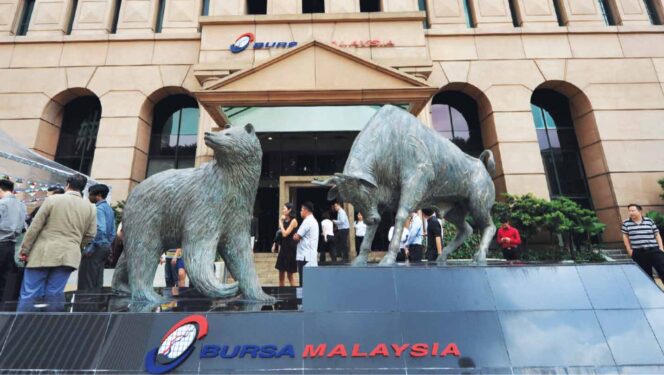AMBANK Research has maintained its hold recommendation on CIMB Group with a lower fair value of RM3.65 per share.
The group had hinted in a conference call with analysts that its earlier loan growth guidance of 6% for FY20 could be on the high side given the present circumstances, particularly the Covid-19 pandemic affecting the global economy.
The group is now guiding for its loan growth to be either flat or at a low single-digit for FY20. This will be supported by Malaysian loans which will grow at a low single-digit with its pipeline of mortgage loans.
Meanwhile, loans in Indonesia are likely to grow by low single-digit to negative growth. Deposit competition in Malaysia is minimal due to the muted loans growth.
“Recall that the group has guided for a compression in interest margin of 5 to 10 basis points (bps) for FY20. Compression is likely to be closer to the higher end of the guided range and AmBank has imputed a contraction in net interest margin (NIM) of 9bps for FY20.”
In Malaysia, the group is looking at another 50bps reduction in the overnight policy rate (OPR) in 1H20 while in Thailand and Indonesia, a further rate cut of 25bps is imminent in FY20. Every 25bps decline in OPR will impact the group’s NIM by 3 to 4bps and net profit by RM150 mil to RM200 mil.
AmBank Research has cut its FY20/21 earnings by 13.8%-13.9% to reflect lower loan growth. With interest accrued for the moratorium of six months from April 1 to Oct 1 to defer borrowers’ repayments, there will be no material impact on the group’s liquidity. Nevertheless, there will be a mild negative impact on interest income in 2Q20 with the recognition of day one loss adjustment.
This is in view of the moratorium granted that has resulted in net present value (NPV) of cash flows from loans to be lower than the contractual value. The impact of this accounting adjustment will be larger on fixed rate than on variable rate loans.
“On a comforting note, the loss adjustment will eventually be reversed as the remaining tenure of the loans progresses. Also, banks are awaiting better clarity from the authorities to determine the extent of the loss adjustment,” says AmBank analyst Kelvin Ong.
MIDF Research opines that the moratorium will also support loans growth due to lack of principal repayment. For FY20, it is revising its loans growth assumption for the group to 2% from 6% previously.
“We are in line with the management in regards to the OPR expectations. The management expects OPR to be reduced by another 50bp this year. This will lead to NIM compression. However, we believe that NIM compression will be moderate despite the OPR cut.
“This is due to the fact that we have observed deposit competition to be tepid this year, which the management has confirmed. Also, liquidity seems to be more than ample in the system,” says MIDF Research analyst Imran Yusof.
According to Affin Hwang, the six-month moratorium granted to individual and SME borrowers would result in a ‘modification loss’ (to hit the profit and loss statement) due to the difference between the recalculated gross carrying amount of the loans and before the modification of the loan tenure.
In Malaysia, approximately 10% of the group’s SME and consumer loans have opted out of the moratorium. Meanwhile, 20% of commercial and corporate loans have opted in to defer their repayments.
For overseas markets, the percentage of loans that have requested for moratorium was lower in Singapore and Indonesia than in Thailand. Though Indonesia is relatively lower for now, the group is expecting the percentage of Niaga’s loans requesting for the moratorium to increase moving forward.
The group has RM369.5 bil of gross loans as at the end of 4Q19. Its direct exposure to vulnerable sectors of Covid-19 (hospitality, aviation, retail and gaming) was 5.4% of its total loans. Bond exposure to these vulnerable sectors was 4.1%.
Including 12 indirect sectors which cover real estate and oil & gas, the group’s total loan exposure to both direct and indirect sectors impacted by Covid-19 stood at 21.0%.
CIMB Group has a loan exposure of 2.3% or RM8.5bil to the oil & gas sector. This comprised 10%, 80% and 10% respectively to borrowers with downstream, midstream and upstream operations.
Meanwhile, for bonds, its exposure to the oil & gas sector was 3.4% of its total bond book of slightly over RM90bil (predominantly exposure to Malaysia). The impaired loan ratio of oil & gas loans was 30.0% with a loan loss coverage of 80.0%.
The group had some material exposure to two regional oil trading companies. One of them with an estimated exposure of less than RM500 mil had gone into receivership on Feb 20 and as such, a full provision is to be made for 1Q20.
Meanwhile, provisions for the other O&G trading firm with an estimated exposure of RM527 mil to RM570mil, which it believes was recently placed under interim judicial management, will be made in 2Q20.
Assuming that total expected credit losses from these two exposures amount to RM0.9 bil to RM1 bil, this translates into a 24-27bps in credit charge.
Affin Hwang Capital has reiterated its sell recommendation on CIMB Group with a lower target price of RM2.60, on weaker operating outlook due to the 50bps policy rate cuts in Malaysia and Indonesia while taking a hit in its oil and gas book.
For consumer loans in Malaysia, there were upticks in delinquencies just before the commencement of the moratorium on April 1. Some of the borrowers have missed repayments in March 2020, taking comfort that they do not need to service their loans temporarily with the moratorium granted.
In Indonesia, asset quality is holding up in 1Q20. However, with the country risk for Indonesia higher versus Malaysia, the potential weakness in asset quality for consumer and corporate loans in the remaining quarters of FY20 is an area of concern.
For non-interest income (NOII), income from unit trust and structured products has declined in April 2020 while fees from syndication deals in 4Q19 did not recur in 1Q20. Fee income is expected to be flat year-on-year (yoy) in 1Q20.
Trading income will be weaker quarter-on-quarter (qoq) and yoy in 1Q20. This is largely due to the softer fixed income securities trading income in Mar 2020 relative to the first two months of this year.
The group is likely to maintain its dividend payout ratio of 40%-60%, and continue the dividend reinvestment plan (DRP). Management is looking at allowing 100% of its dividends ahead to be electable for reinvestments into additional shares. Its earlier plan called for distributing part of its dividends as cash and the remaining part as electable for reinvestments.
In terms of its capital position, MIDF Research believes that the group is facing current headwinds in a position of strength. Its total capital ratio as at end FY19 stood at 16.8%.
MIDF Research is revising its earnings forecast for FY20 and FY21 downward by -29.3% and – 20.9% to take into account the higher credit cost and weakness in income.
MIDF Research has maintained its buy call with a revised target price of RM4.30 as it believes that the group will be facing these headwinds in a position of strength given the build-up of capital over the years, despite recognising the headwinds that the group will be facing.
It expects asset quality and credit cost to come under pressure due to the stalled economic activities during the MCO. Moreover, it believes that since the group is a Domestic Systemically Important Bank, it might be supported.
In addition its dividend yield of about 5% should provide some protection to investors from any downside risks. – April 29, 2020










